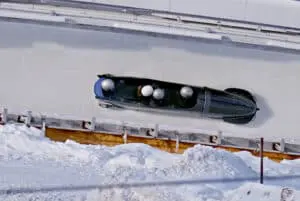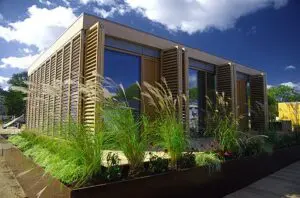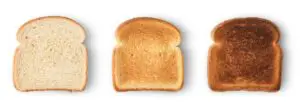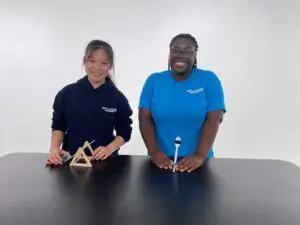Activity Content Sections
Instructions
Relevant Terminology
Center of mass: The point in an object around which the mass is balanced. If you were to balance the bobsled on your finger, that point is the balance point, which isn’t always right in the middle.
Drag: The slowing down of something as it moves through air, water, or other fluid, which causes friction. A race car experiences drag because of air pushing against it as it goes around the track.
Friction: The force that slows objects down when they are rubbing against each other. Some things make lots of friction, like brakes on a tire, and some make very little friction, like skates on ice.
Kinetic energy: Energy of motion. A bobsled sliding down its track has kinetic energy.
Momentum: The amount of mass in motion. An object’s momentum depends on how much matter (its mass) is moving and how fast it’s moving. A boulder speeding down a mountain has much more momentum than a marble rolling slowly across the floor, and would require much more energy to stop it. (For older participants: momentum is the product of an object’s mass and its velocity.)
Potential energy: Stored energy. Anything that can move but isn’t has potential energy. A bobsled right before it starts down its racecourse has potential energy.








2 Comments
Water-resistant our wales in advance of when numerous planking. The particular wales surely are a selection of heavy duty snowboards that this height ones would be the same in principle as a new shell planking having said that with much more height to help you thrust outward in the evening planking. planking
I just wanted to write down a quick comment to say thanks to you for all of the fantastic suggestions you are showing on this site. My time intensive internet look up has at the end been rewarded with useful points to talk about with my visitors. I would assume that most of us visitors actually are very much blessed to live in a fantastic network with many outstanding professionals with insightful strategies. I feel pretty grateful to have come across your entire web page and look forward to some more excellent moments reading here. Thanks a lot once more for everything.